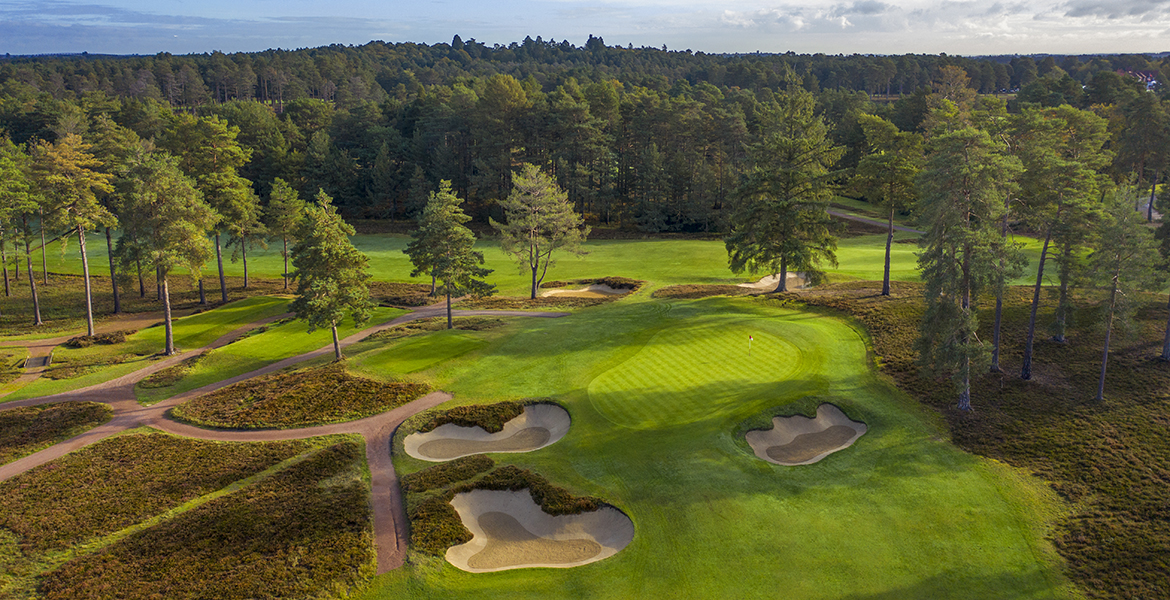By Graylyn Loomis

When Hurricane Irma shifted west September 2017, Naples, Fla. was in the middle of the path. Naples Beach Hotel and Golf Club braced for the storm by shuttering windows and removing anything loose from the golf course.
Once the storm passed and the resort team returned to assess the situation, they were relieved to find most of the damage was only superficial. Nearly all of the work done during the club’s 2016 renovation remained intact.
“It’s a mess, but it’s a largely superficial mess,” said General Manager John Parsons in the Naples Daily News. “We’re lucky we’re not under water. This is ugly, but this is ugliness that’s repaired in one season.”
Amazingly, cleanup at Naples Beach only took three weeks before the course was open for play. Staff and the community rallied together to recover after the brutal storm.
It was that community and the resort’s ties to it that stood out during my stay at Naples Beach Hotel and Golf Club prior to Hurricane Irma. The hotel has been owned by the same Naples family since 1947 and the local connection is clear during a visit. I arrived on a nondescript Sunday and I found live music, hundreds of people dancing, and only a few remaining seats for dinner. I assumed a company was having a conference, but to my surprise, everyone at the bar was local to Naples. Every Sunday evening the hotel throws a party and the locals have been coming for years to drink and dance by the beach.
Want to find the best spot in a given area? Find where the locals hang out.

I visited Naples to play the renovated Naples Beach golf course. The original course was built in 1929 and at the time was only the second course in Naples (the first was a nine-holer with sand greens). Over the years the course was renovated several times following various hurricanes, and the result was a disjointed layout that suffered from mediocre conditioning.
In early 2016 ownership at Naples Beach hired course architects John Sanford and Jack Nicklaus to redesign the layout. Nicklaus’s connection to the course? It was where he broke 40 for nine holes for the first time as an 11-year-old in 1951, only one year after he’d taken up the game.

The result of Nicklaus and Sanford’s work is a completely new routing with fewer trees that makes significantly better use of the land.
Sanford included traditional design features such as a Redan green and numerous double greens that aren’t typical at Florida resort courses. The new design also has fewer bunkers than most Florida designs and the architects used small lakes throughout the property to frame and divide holes instead of rough or trees. Homes only line the outside perimeter of the property, so the result is a very open feel with long views.

Due in part to the course’s oceanside location and in part to its openness and lack of trees, the site can get very windy. Those same winds dry out the course, provide some serious challenge, and create firm and fast playing conditions. Many sets of tee mean the course won’t be too long for anyone and it was refreshing to see a renovation that made a course more playable instead of harder, longer, and more “tournament-ready.”

The $9 million course renovation was part of a larger $50 million set of improvements to the resort that included updates to the rooms, event spaces, and restaurants. Even after all of the investment in recent years, I was told of more plans to improve rooms and continue polishing the resort. I look forward to returning over time to see those improvements and play another round of golf on what was one of my favorite public courses I’ve played in Florida.
________________
Have you played golf in southern Florida? Tell us about your favorite courses in the comments below!







Twin Eagles – Talon Course is a fantastic track played many times. Another is any of the Grey Oaks courses.
I have lived in Naples, FL for the last 10 years and have been lucky enough to play both the top public and private courses in the area. By far the best Public course in SWFL is Old Corkscrew located 15 miles North of Naples in Estero. Old Corkscrew is a Jack Nicklaus designed course and is always in pristine condition. The course is very challenging and is a local qualifying course for the US Open. The best Private course in the area is Calusa Pines located in Naples, FL. Calusa Pines was named the 3rd best course in Florida as well as a top 70 course in the US. This course is very exclusive and also provides the highest elevation in Collier County. Several PGA Tour members have called this course home including Mark Lye and Roco Mediate. If you ever have an opportunity to place this course, please do. You would regret it.
I have played all courses you mentioned except Calusa Pines, what about Stoneybrook in Estero? I played that course many times and for the money or cost per hole it beads any thing in the area. Just my opinion.
For my money, the best public course on SW Florida is Old Corkscrew. It’s a challenging Nicklaus Signature design, in a beautiful setting (a bit remote – about 5 miles east of I-75) with no homes in view.
TwinEagles and Grey Oaks are both private golf clubs.